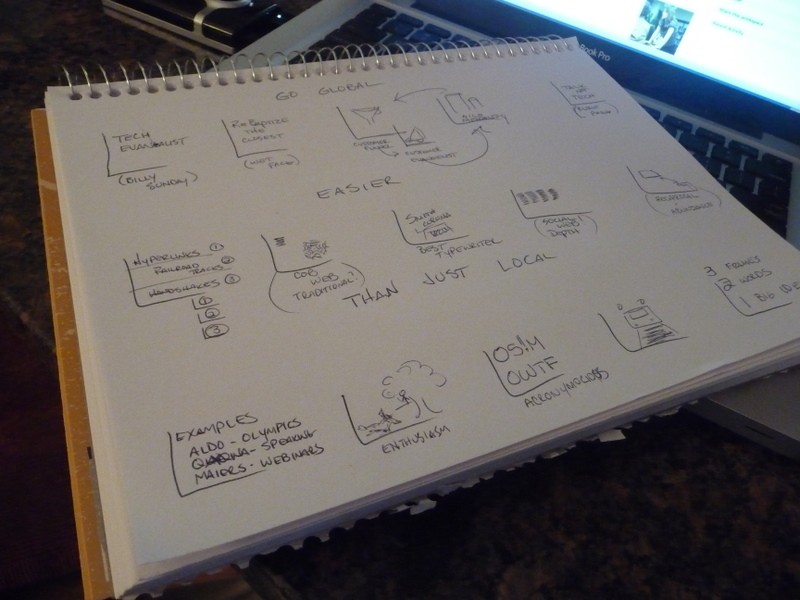There are no shortcuts to delivering great pitches. You need ample time to plan your goals and prepare the message you want to deliver. Organize your ideas into a logical narrative by making a pitch deck storyboard.
Storyboarding is an essential step in filmmaking, and has been around for quite some time. It involves creating rough sketches that plot how a certain story will progress. Similarly, creating a pitch deck storyboard will allow you to visualize the flow of your pitch. Think of it as a visual outline, giving you a chance to step back and see your pitch deck as a whole.

It’s the blueprint you’ll refer to when building your pitch deck. Here’s how to get started:
Ask yourself, “what do I want to say?”
Before you begin storyboarding, think of your core message first. What is the one thing you want your audience to take away from your pitch? If you were writing an essay for class, this would be your thesis statement.
Once decided, list all the key points surrounding your main message. Let your ideas flow organically and don’t try to edit yourself at this stage. Simply jot down everything that comes to mind. It’s better to do this away from your computer. Some believe that writing by hand helps the creative process.
Pitch Deck storyboard: Turning your ideas into a narrative

With your ideas on paper, you can now visualize and arrange them into a logical sequence. To start with your pitch deck storyboard, take a clean sheet of paper and start doodling. The general idea is to sketch your ideas into a series of panels. Each panel will serve as a single slide for your pitch deck. You can divide a clean page into several sections or use several sticky notes. Create as much storyboard panels as you need. For collaborations, this is a great time to work out each other’s ideas.
Some practical tips: If you’re sketching on a single sheet, it’s better to use a pencil. You don’t want to make anything permanent at this stage. The whole point of a pitch deck storyboard is that you get to see how your ideas flow. You should be able to make adjustments if something doesn’t feel right. For this reason, sticky notes are a lot more convenient. Use one sheet as a single panel and stick it on a flat surface. When you’ve finished sketching and writing, you can easily rearrange the notes in any order you’d like.
Take a step back and look at the big picture
After sketching out your ideas, you can now step back and review your pitch deck storyboard. Scrutinize how each panel is connected. Figure out if this sequence helps in building a logical narrative for your core message.
Does every panel contribute to the point you want to drive home? Are your points supporting the argument you’re trying to make? Be discerning and remove details that you don’t need. From this stage, you’ll come out with a blueprint to guide you with your pitch deck.
—
When creating a storyboard, the most important thing to remember is to keep an open mind.
In summary, a pitch deck storyboard will help:
- Turn your ideas into a logical and discernible narrative
- Visualize how your key points can translate into a pitch deck presentation
Let your thoughts flow out organically. Storyboarding allows you to swim through ideas and concepts until you find the ones that suit your message the most.

Download free pitch deck templates now.
Get professionally designed pitch deck slides weekly.
Sign Up NowFeatured Image: Wander Lima via Flickr
Image Sources: (1) Eelke via Flickr; (2) Death to the Stock Photo; (3) Mike Sansone via Flickr



